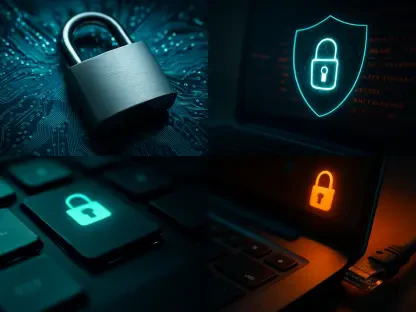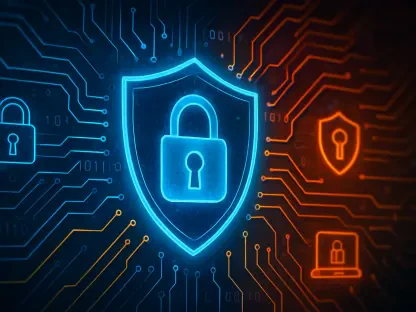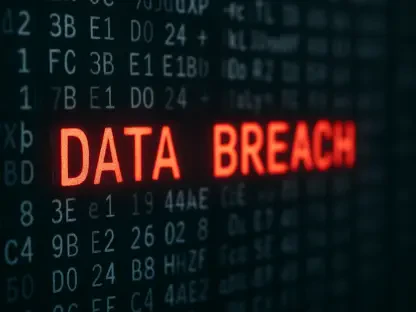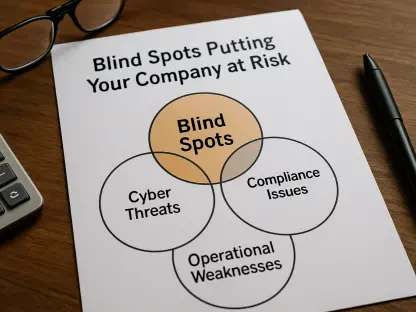In recent years, the landscape of cybersecurity has undergone significant transformation, with Chief Information Security Officers (CISOs) becoming pivotal players in ensuring organizational resilience against cyber threats. These transformations have not only redefined the roles and responsibilities of CISOs but have also emphasized the need for robust security frameworks to mitigate emerging threats effectively. This article explores the top cybersecurity frameworks and strategies that CISOs are employing to safeguard their organizations, delving into their evolving roles, the importance of security frameworks, and the financial justification for cybersecurity investments.
Evolving Role of CISOs
Strategic Leadership
By 2025, CISOs have transitioned from traditional IT-centric roles to becoming integral members of executive leadership teams. Their responsibilities now extend beyond technical oversight to include high-level strategic decision-making and aligning cybersecurity strategies with overall business objectives. This shift reflects the growing recognition of cyber risks as fundamental business risks. As vital parts of the executive team, CISOs contribute to long-term business planning and are responsible for presenting cybersecurity as a strategic advantage. Their insights help in integrating security posture within the entire business strategy, ensuring that organizational growth does not compromise security.
Influence and Decision-Making
As key figures in executive leadership, CISOs now have significant influence over organizational priorities. They actively participate in cross-functional discussions, ensuring that security considerations are integrated into every aspect of business operations. This involvement is critical for creating a cyber-resilient culture that permeates the entire organization. Their role in decision-making extends to influencing product development, mergers and acquisitions, and other crucial business activities, ensuring these decisions are made with a clear understanding of potential cyber risks. By collaborating closely with other executives, CISOs help in balancing innovation with security, promoting a unified approach to risk management across all departments.
The Importance of Security Frameworks
Comprehensive Tools for Resilience
Security frameworks have evolved into comprehensive tools that help organizations identify, assess, and mitigate risks while maintaining regulatory compliance. These frameworks are not just checklists but essential components of a robust cybersecurity strategy. They enable CISOs to communicate effectively between technical and business teams, ensuring that security measures align with organizational goals. Through structured and standardized processes, modern security frameworks provide a blueprint for establishing a resilient security posture, encompassing every facet of the organization’s operations. This systematic approach to cybersecurity helps in building an adaptable and proactive defense mechanism, capable of responding to advanced threats.
Alignment with Business Objectives
Modern security frameworks assist CISOs in demonstrating the value of cybersecurity investments to executive boards. By aligning security initiatives with business objectives, they can justify resource allocation and prioritize key areas that require attention. This alignment is crucial in ensuring that cybersecurity budgets are rationalized in an economically constrained environment. Effective security frameworks offer measurable outcomes and metrics, making it easier for CISOs to present a clear picture of the organization’s security health and its direct impact on business continuity. This approach reinforces the idea that investment in cybersecurity is a protective measure for both operational stability and financial performance.
Key Security Frameworks in 2025
NIST Cybersecurity Framework (CSF 2.0)
The NIST Cybersecurity Framework (CSF 2.0) has become universally applicable, extending beyond critical infrastructure. It features core functions such as Identify, Protect, Detect, Respond, Recover, and Govern. This framework provides a systematic approach to managing cybersecurity risks, making it indispensable for organizations of all sizes. The inclusion of ‘Govern’ highlights the importance of establishing well-defined governance structures to oversee cybersecurity efforts. NIST CSF 2.0’s adaptability allows it to be tailored to fit different organizational needs, offering scalable and flexible security practices that support continuous improvement and resilience.
ISO/IEC 27001 and CIS Controls
ISO/IEC 27001 continues to offer systematic management of sensitive information with updated controls to address new technologies and emerging threats. For organizations operating internationally, ISO/IEC 27001 remains a gold standard. Additionally, CIS Controls (Version 8) offers practical best practices tailored to various organizational sizes and industries, addressing common attack vectors effectively. By focusing on high-priority actions that provide the greatest benefit for protection and mitigation, CIS Controls help organizations manage their cyber defenses with clarity and precision. The combination of these frameworks allows CISOs to implement a holistic security strategy that covers both compliance and operational security needs.
Financial Justification and Value of Cybersecurity
Quantifying Cybersecurity Risks
CISOs leverage frameworks like Factor Analysis of Information Risk (FAIR) to quantify cybersecurity risks in financial terms. This approach helps in securing investments from executive boards and demonstrates the tangible business value of security initiatives. By providing an economic valuation of risks, CISOs can illustrate the potential financial impact of cyber threats. FAIR enables organizations to prioritize their cybersecurity investments based on clear economic rationale, making it easier to allocate resources effectively and justify expenditures to stakeholders. This financial quantification helps in transforming cybersecurity discussions from abstract concepts to concrete business imperatives.
Justifying Investments
In an era where budget rationalization is necessary, the ability to quantify and communicate the financial implications of cybersecurity is vital. CISOs use these metrics to justify investments in critical areas, ensuring that their organizations remain resilient against sophisticated cyber threats. Beyond mere cost-justification, quantifying risks in monetary terms helps in aligning cybersecurity investments with broader business priorities, reinforcing the notion that cybersecurity is an essential enabler of business success. By presenting security investments as a vital component of business continuity and competitive advantage, CISOs can garner the necessary support and funding from the executive board.
Framework Adoption and Implementation
Customization and Risk Assessment
Successful adoption of security frameworks requires customization to fit the organization’s structure, risk appetite, and existing investments. Conducting thorough risk assessments allows CISOs to identify significant threats and prioritize framework components accordingly. Tailoring the framework to specific business contexts ensures that the security measures are both relevant and effective. This customization involves aligning the framework with industry-specific regulations and compliance requirements, as well as integrating it with existing security protocols and tools. A detailed understanding of the organization’s unique risk landscape enables CISOs to implement targeted and nuanced security controls, enhancing overall resilience.
Integration and Automation
Frameworks should be integrated with existing tools to minimize redundancy and maximize efficiency. Advanced tools and automation can streamline assessment, monitoring, and reporting processes, allowing CISOs to focus on strategic initiatives rather than routine tasks. Automation creates opportunities for continuous monitoring and real-time threat detection, significantly enhancing the organization’s ability to respond swiftly to incidents. By integrating automated solutions with the security framework, organizations can achieve a higher level of operational efficiency and effectiveness. This integration simplifies compliance reporting, reduces manual efforts, and enables a more dynamic and responsive cybersecurity posture.
Human Element and Cross-Functional Collaboration
Collaboration and Education
Effective implementation of cybersecurity frameworks depends on collaboration between security teams, IT departments, business units, and executive leadership. Continuous education and awareness programs are crucial in ensuring that all employees understand their role in maintaining security and mitigating risks posed by human error. These programs should be tailored to the specific needs and contexts of different departments, ensuring that each team is equipped with the knowledge and skills required to protect the organization. Encouraging a culture of security awareness across all levels of the organization fosters collective responsibility and vigilance, which are essential for preventing and mitigating cyber incidents.
Continuous Review and Adjustment
In recent years, cybersecurity has seen major shifts, with Chief Information Security Officers (CISOs) emerging as key figures in defending organizations from digital threats. These changes have not only redefined what CISOs do but have also highlighted the critical need for strong security frameworks to combat new and evolving risks. This discussion focuses on the leading cybersecurity frameworks and the strategies that CISOs use to protect their companies. It examines how the role of the CISO has evolved, why security frameworks are crucial, and how investing in cybersecurity can be financially justified. As cyber threats grow more sophisticated, organizations rely more heavily on CISOs to develop and implement effective defenses. With the right strategies, these leaders can ensure a stable and secure IT environment that not only protects data but also builds trust with customers and stakeholders. Investing in cybersecurity is no longer optional; it’s a must to safeguard assets and maintain operational continuity.









